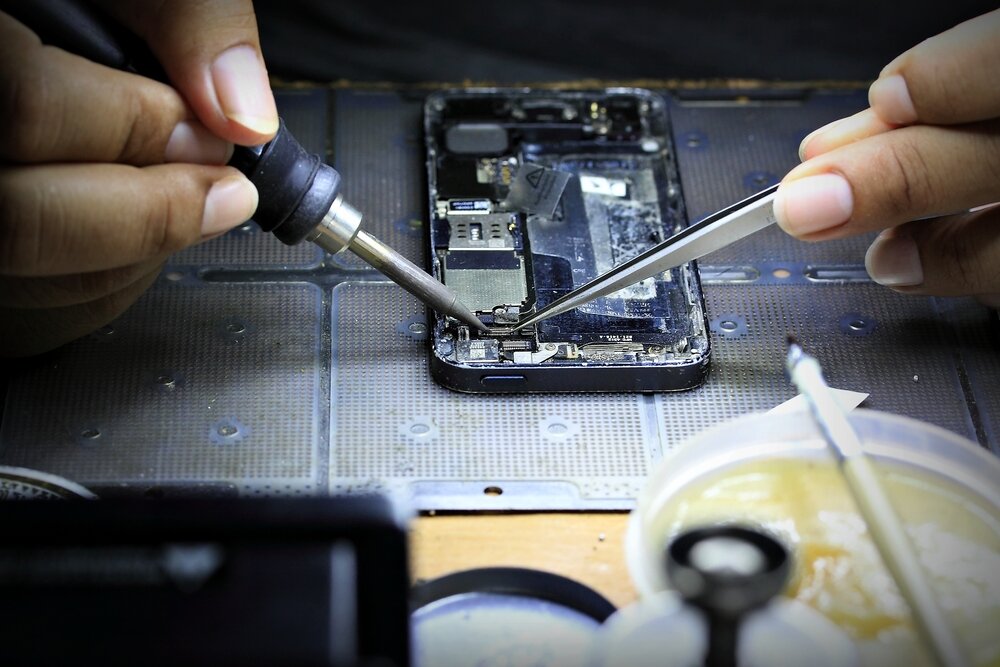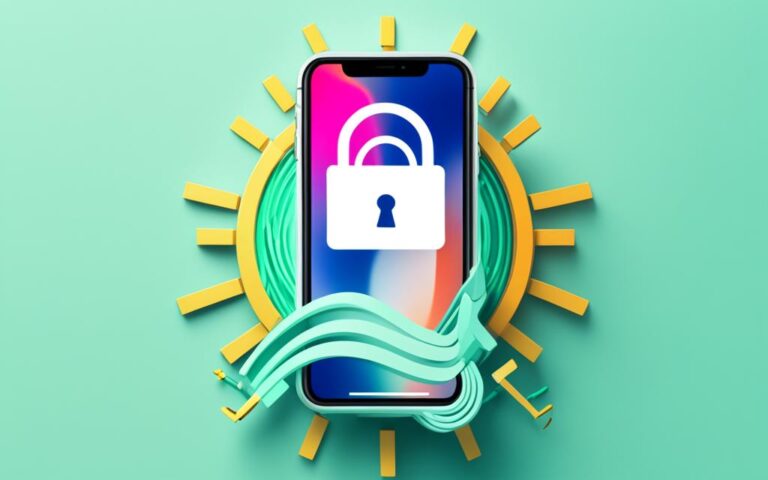Micro soldering basics in smartphone repair.
Micro soldering is an essential skill set in the realm of smartphone repair, especially as devices become more complex and integrated. Whether you’re dealing with component replacement or intricate circuit board repair, understanding the fundamentals of micro soldering can elevate your repair capabilities to a professional level. This comprehensive guide aims to introduce you to the soldering techniques, soldering tools, and safety precautions necessary for effective and safe micro soldering in smartphone repair. We’ll explore everything from the types of soldering iron and soldering flux to use, to the best practices for ensuring the longevity and functionality of your repaired devices.
Types of Soldering Irons for Micro Soldering
When it comes to micro soldering, the type of soldering iron you use can make a significant difference in the quality of your repairs. There are various types of soldering irons available, each with its own set of advantages and disadvantages.
Pencil Irons
These are the most basic type of soldering irons and are generally best for simple, quick jobs. However, they lack the temperature control features that are often necessary for more complex smartphone repair tasks. They are usually the cheapest option and can be a good starting point for beginners, but their limitations quickly become apparent as you delve into more advanced repairs.
Soldering Stations
These are more advanced and come with a separate station that allows you to control the temperature. This feature is crucial for micro soldering, where precise temperature control is often needed. Many professional repair shops prefer using soldering stations due to their versatility and precision.
Cordless Irons
These are battery-operated and offer the advantage of portability. However, they may not provide the consistent heat required for more complex component replacement. They are best suited for quick, on-the-go repairs where portability is more important than precision.
Hot Air Rework Stations
These are used for both soldering and desoldering tasks and are particularly useful when dealing with circuit board repair involving surface-mounted components. Hot air rework stations are often used in conjunction with traditional soldering irons for tasks that require both soldering and desoldering.
Butane Irons
Butane irons are another portable option that uses butane gas as a fuel source. They offer better temperature control compared to battery-operated irons but require refilling, which could be a drawback in a professional setting.
For a more in-depth look at the types of soldering irons suitable for micro soldering, you can read this Essential Guide to Micro Soldering iPhone Repair.
Smartphone Repair: Best Practices in Micro Soldering
When it comes to micro soldering, following best practices is crucial for achieving high-quality, long-lasting repairs. Here are some of the best practices you should consider:
Flux Application
Applying the right amount of flux is crucial for ensuring a clean solder joint. Too little flux can result in a weak joint, while too much can create a mess that’s difficult to clean up. It’s advisable to use a flux pen or syringe for precise application.
Tip Selection
The size and shape of the soldering tip are important factors in achieving precise solder joints. A fine, pointed tip is generally best for micro soldering tasks. Different tips may be required for different components, so having a variety of tips on hand is beneficial.
Temperature Control
As mentioned earlier, precise temperature control is essential in micro soldering. Make sure to use a soldering iron or station that allows you to adjust the temperature according to the needs of the specific repair. Some advanced stations even offer programmable temperature profiles for different tasks.
Component Handling
Proper handling of components is essential to avoid static discharge or mechanical damage. Always use ESD-safe tools and work on an ESD-safe mat. Some components are sensitive to heat, so heat shields or thermal tape may be required during soldering.
Cleaning
After completing the soldering work, it’s important to clean the area to remove any residual flux or solder particles. This ensures the longevity of the repair. Isopropyl alcohol is commonly used for this purpose.
Inspection
Once the soldering is complete, a thorough inspection is necessary to ensure that there are no solder bridges or cold joints. Using a magnifying glass or a microscope can aid in this inspection.
Testing
After the soldering and cleaning are done, it’s crucial to test the device to ensure that the repair was successful. This involves not just a quick power-on test, but also checking the functionality of any components that were near the soldering area.
For more insights into best practices in micro soldering, you can read this LinkedIn article on Circuit Board Phone Soldering.
Smartphone Repair: Safety Precautions in Micro Soldering
Safety should always be a top priority when engaging in micro soldering tasks. Here are some essential safety precautions to keep in mind:
Eye Protection
Always wear safety goggles to protect your eyes from solder splatter and fumes. Some goggles come with anti-fog and anti-scratch coatings for better visibility and durability.
Ventilation
Ensure that your workspace is well-ventilated to disperse harmful fumes that may be emitted during the soldering process. Consider using a fume extractor to actively remove soldering fumes from your workspace.
Heat-Resistant Gloves
Wearing heat-resistant gloves can protect your hands from accidental burns and also provide a better grip on your soldering tools. These gloves are often made of materials like Kevlar or Nomex that offer excellent heat resistance.
ESD Protection
As with all smartphone repair tasks, make sure to use ESD-safe tools and work on an ESD-safe mat to prevent static discharge, which can damage sensitive components. Wrist straps and ESD-safe shoes can also be beneficial.
Proper Storage
Always store your soldering iron and other tools in a safe place when not in use to prevent accidents. Tool organizers or dedicated storage units can help keep your workspace tidy and safe.
First Aid Kit
Keep a first aid kit nearby in case of minor burns or other injuries. Knowing basic first aid procedures can be invaluable in an emergency. The kit should include burn ointment, sterile gauze, and antiseptic wipes.
Fire Safety
Always keep a fire extinguisher within reach, especially when working with high temperatures. Make sure it’s suitable for electrical fires.
Electrical Safety
Ensure that all electrical connections are secure and that you’re using a grounded electrical outlet to prevent electrical shocks.
Common Mistakes to Avoid in Micro Soldering
Even experienced technicians can make mistakes when it comes to micro soldering. Being aware of these common errors can help you avoid them:
Insufficient Wetting
One of the most frequent mistakes is insufficient wetting of the solder joints. This can result in weak connections that may fail over time. To avoid this, make sure to apply an adequate amount of flux and ensure that the solder fully wets the joint.
Excessive Solder
Using too much solder can lead to solder bridges, which can cause short circuits and other issues. A controlled application of solder, often using a fine-tip soldering iron, can help prevent this problem.
Overheating
Applying too much heat can damage sensitive components or even the board itself. Always adhere to the recommended temperature settings and use a temperature-controlled soldering iron to mitigate this risk.
Cold Solder Joints
A cold solder joint occurs when the solder does not melt completely, leading to a weak and unreliable connection. Make sure to apply consistent heat until the solder flows freely to form a good joint.
Improper Cleaning
Failing to properly clean the soldering area before and after the process can lead to contamination, which may affect the quality of the solder joint. Using isopropyl alcohol for cleaning is a common practice.
Lack of Inspection
Skipping the inspection step can result in overlooked mistakes that could compromise the integrity of the repair. Always use a magnifying glass or microscope for a thorough inspection.
Ignoring Safety Precautions
Not adhering to safety guidelines can not only result in poor-quality work but also pose risks to your well-being. Always use safety goggles, heat-resistant gloves, and work in a well-ventilated area.
Not Testing After Repair
After completing the soldering work, it’s crucial to test the device to ensure that the repair was successful. This involves not just a quick power-on test, but also checking the functionality of any components that were near the soldering area.
For more details on common mistakes to avoid in micro soldering, you can read this Advanced Rework Technology article on Common Solder Mistakes & How to Resolve Them.
Frequently Asked Questions (FAQs) About Micro Soldering
What is Micro Soldering?
Micro soldering is a specialized form of soldering that involves working with tiny components, often smaller than 1mm in size, using specialized equipment like fine-tip soldering irons and microscopes.
Is Micro Soldering Difficult to Learn?
While micro soldering can be challenging due to the small size of the components and the precision required, with proper training and practice, it is a skill that can be mastered.
What Tools Do I Need for Micro Soldering?
You’ll need a fine-tip soldering iron, a microscope, tweezers, flux, solder wire, and heat-resistant gloves, among other tools.
How Do I Avoid Common Mistakes in Micro Soldering?
Avoiding common mistakes involves following best practices, using the right tools, and adhering to safety precautions. Always inspect your work and test the device after completing the soldering.
Is Micro Soldering Safe?
Yes, micro soldering is generally safe when proper safety precautions are followed. This includes using safety goggles, working in a well-ventilated area, and using heat-resistant gloves.
Can I Perform Micro Soldering at Home?
While it’s possible to perform micro soldering at home, it’s recommended to have a dedicated workspace that is well-ventilated and equipped with the necessary safety features.
Conclusion
Micro soldering is an essential skill in the realm of smartphone repair, offering a solution for fixing intricate components that are often deemed unrepairable. From understanding the basics to mastering advanced techniques, this guide aims to provide you with comprehensive insights into the art of micro soldering. We’ve covered the essential tools you’ll need, best practices to follow, safety precautions to take, and common mistakes to avoid. Whether you’re a seasoned technician or a beginner looking to expand your skill set, understanding the intricacies of micro soldering can significantly elevate your repair capabilities.
By adhering to safety guidelines and avoiding common pitfalls, you can ensure not only the success of your repairs but also your safety and that of your clients. As technology continues to evolve, the demand for skilled micro soldering technicians is likely to grow, making it a valuable skill to invest in for the future.












